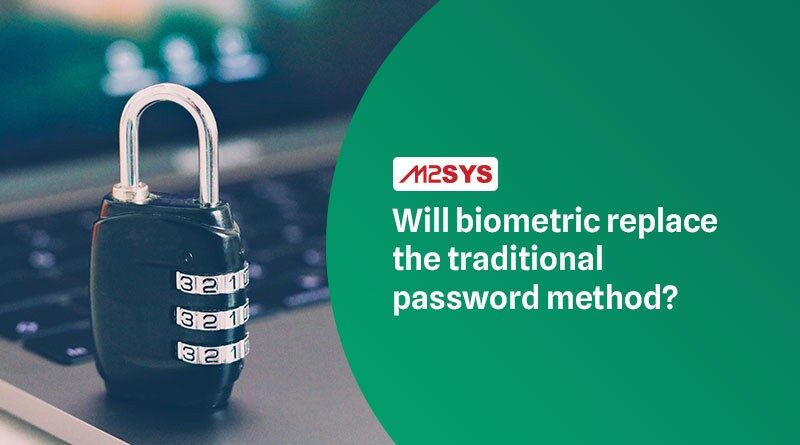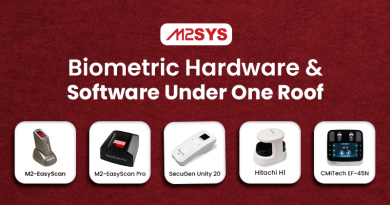Will biometric passwords replace the traditional password?
Biometric technology is one of the blessings of the 21st century, and it has made our lives easier. We have seen widespread use of biometric technology in smartphones, healthcare, and government institutions. The use of biometrics as an alternative to passwords is getting popular. The numbers indicate that biometric attributes for identification and authentication will increase in the upcoming years. But will it replace the use of traditional passwords? We will try to find out more in this article, so let us start.
What Is Biometric Password Authentication?
Biometric password authentication is a security technique that compares a user’s biometric traits to authenticate or recognize their identification. It is a computer-assisted way of verifying an individual’s identity based on their unique biological characteristics. It’s a security procedure that ensures a person is who they claim to be.
Biometrics is distinguished from the more significant subject of human identification science by the word automation. Biometrics are behavioral and physical human features such as fingerprints, face, hand shape, iris, palm print, voice, and digital signatures that can digitally identify a person and enable access to data, devices, or systems.
Did you recently unlock your phone with your fingerprints or your computer with your eyes? For quite some time, biometric authentication has been utilized in cell phones for user identification. In reality, biometric technology has been used for client and business administration in various industries and corporations. This cutting-edge technology is one of many biometric systems in use today to automatically identify and authenticate persons.
Different Types of Biometric Passwords
Individuals’ biometric data is typically captured using a scanner or a camera with the help of biometric data capture and later authenticated using matching software. This implies that the user must be present to supply and authenticate this information at a physical location such as a workstation or a smart device. There are several methods of biometric authentication. Here is a list of the most commonly used biometric authentications:
- Fingerprint recognition
- Facial recognition
- IRIS recognition
- Finger vein recognition
These are a few of the most common biometric authentication methods, and among them, fingerprint, facial, and finger veins are the most commonly used across different industries.
Biometric Password Authentication Advantages
Biometrics is getting much more popular these days thanks to acknowledging its various advantages among the general population. Here are a few of the most known benefits of Biometric password authentication:
1. Increased Security
By authenticating a concrete physical attribute, biometrics enables additional levels of assurance. Most users’ passwords, PINs, and personal identifying information have certainly been exposed due to a data breach. Biometric authentication adds a roadblock for fraudsters that only a genuine, authorized user can get around. Even scammers know your personal information; it’s almost impossible to go around biometric authentication without the physical attribute.
2. Scalability
Once deployed, biometrics are adaptable, working with workstations, smartphones, mobile devices, and apps and services. You can assist with scaling in your company without jeopardizing security or compliance.
3. User Experience
While the underlying mechanisms for biometric authentication are sophisticated, they are effortless and rapid for end users. It’s faster to put your finger on a scanner and unlock an account in seconds than to type out a long password with multiple special characters. Furthermore, most users make the error of forgetting their passwords. But it is not possible to forget your biometric authentication.
4. Non-Transferable
Biometric authentication necessitates the user’s presence at the time of permission. A physical biometric cannot be transferred or shared digitally; most biometric authentication methods must be used with a hardware device.
5. Almost Unhackable
Biometric traits like fingerprints, irises, and finger veins are unique to individuals. A person with similar biometric characteristics, such as fingerprints, is near impossible. With the current biometric technology in mind, it is almost impossible to replicate the biometric data.
Now you know the advantages of using biometric passwords, but as most of us use traditional passwords, it will be hard to distinguish between both entities. To better understand them,, let’s look at the comparison chart.
Biometric Authentication vs. Password
| Biometric Authentication | Password |
| Biometric authentication is based on unique physical characteristics | Password is simply based on a secret phrase, word or random number |
| Biometric characteristics can not be changed | Password can be changed, creating the risk of hacking |
| Biometric authentication provides high-level security assurance | Password provides low-level security assurance |
| Biometric authentication can not be transferred or stolen | Password can be transferred and often gets stolen |
| Biometric authentication is highly scalable without jeopardizing security or compliance | Password has no scalability |
| Biometric authentication provides a fast user experience | Password has a lower user experience level as its passwords are forgotten most of the time. |
Biometrics To Replace Traditional Password
There is no doubt that biometrics has better security than the traditional password, but it’s a fact that traditional passwords are not going away any time soon. It will take some time for people to adapt to the shift in technology. One of these one-of-a-kind technologies is Hitachi VeinID Five Contactless Finger Vein Biometric which is a Single Sign-On (SSO) Solution.
A Single Sign-On solution implies that you need one authentication for several application logins or tasks. For example, if you are using Hitachi VeinID Five Contactless Finger Vein Biometric, they will be able to:
- Log into Windows 10 computer
- Change Windows 10 password.
- Unlock Windows 10 session.
There are reasons why it is hard to replace the traditional password method. It is mostly due to hardware dependencies. With the traditional password, you do not need extra hardware, but, normally, additional hardware is required for biometric authentication.
But this is not the case anymore; thanks to Hitachi VeinID Five Contactless Finger Vein Biometric, you do not need any extra hardware. You can enroll the hand template and match to authenticate by using the existing webcam. It might sound surprising, but it is effortless. All you need to do is raise your hand to go passwordless. Using this unique technology, you go passwordless and contactless all at once. It will take some time for the passwords to become obsolete, but Contactless Finger Vein Biometric is the beginning. If you want to experience this phenomenal technology, get in touch with us today.











